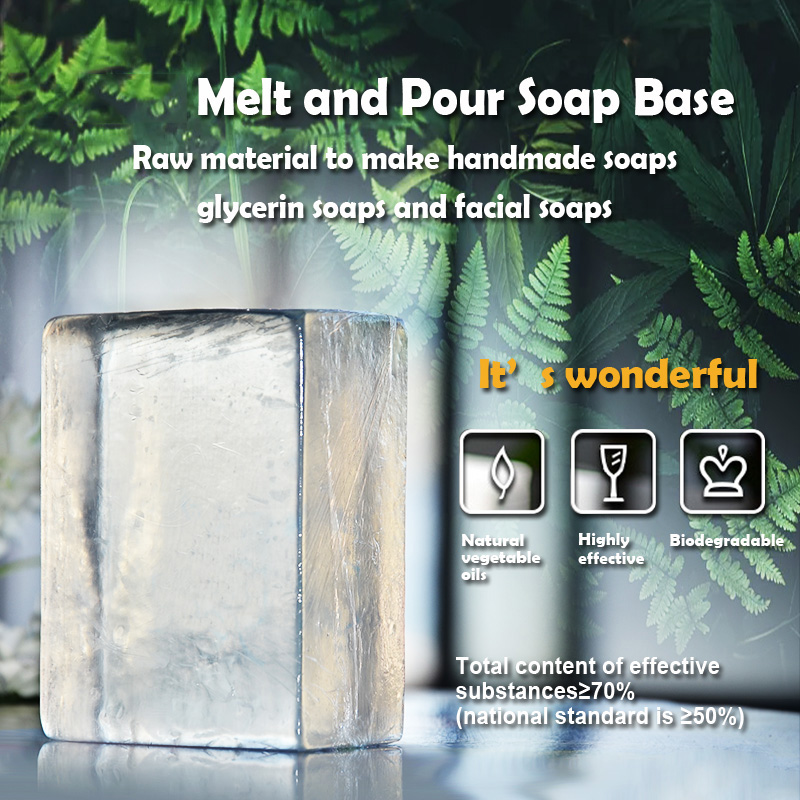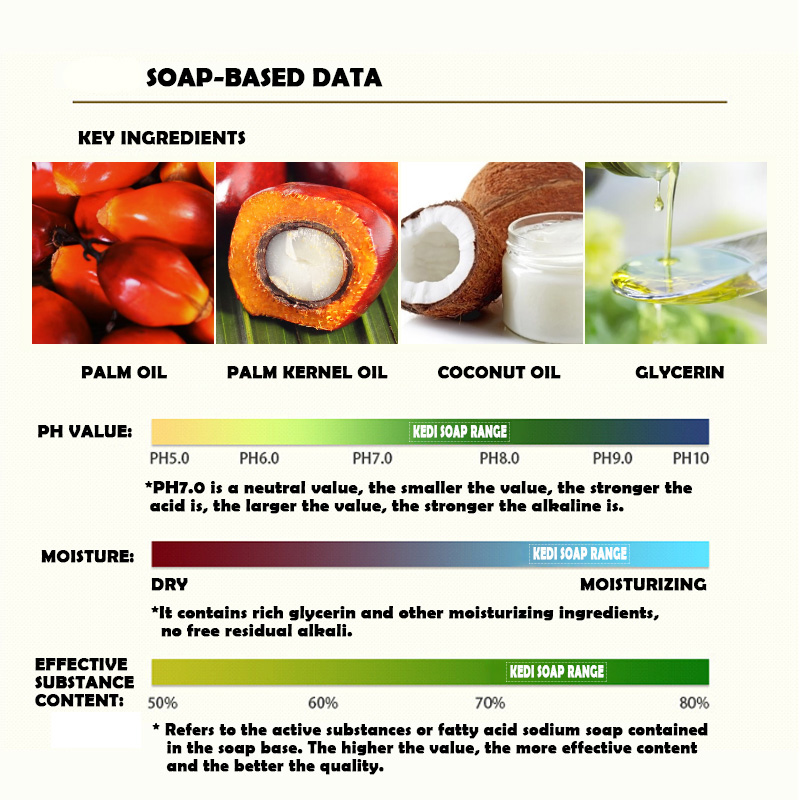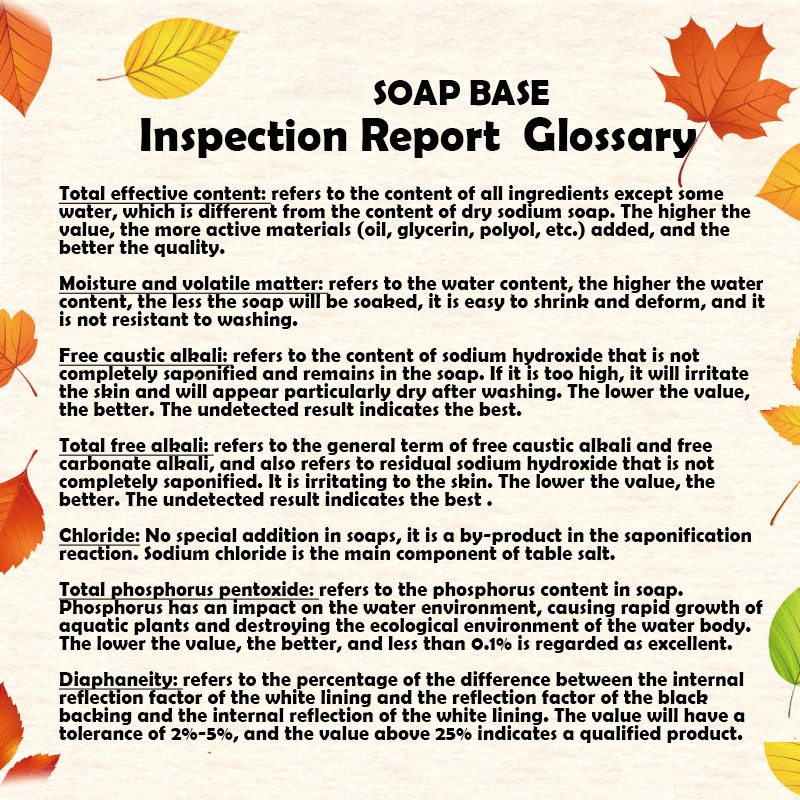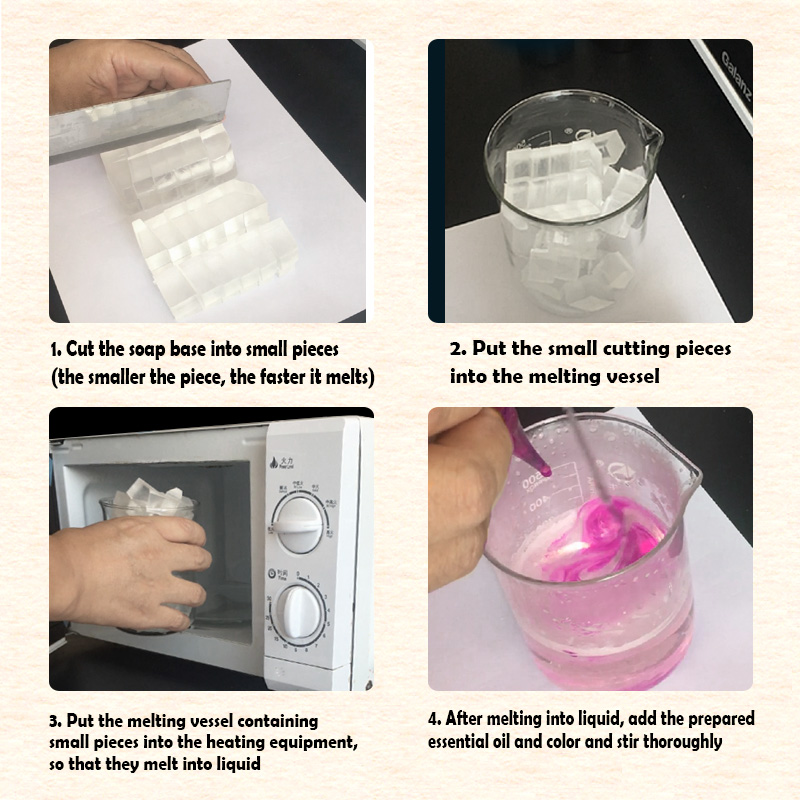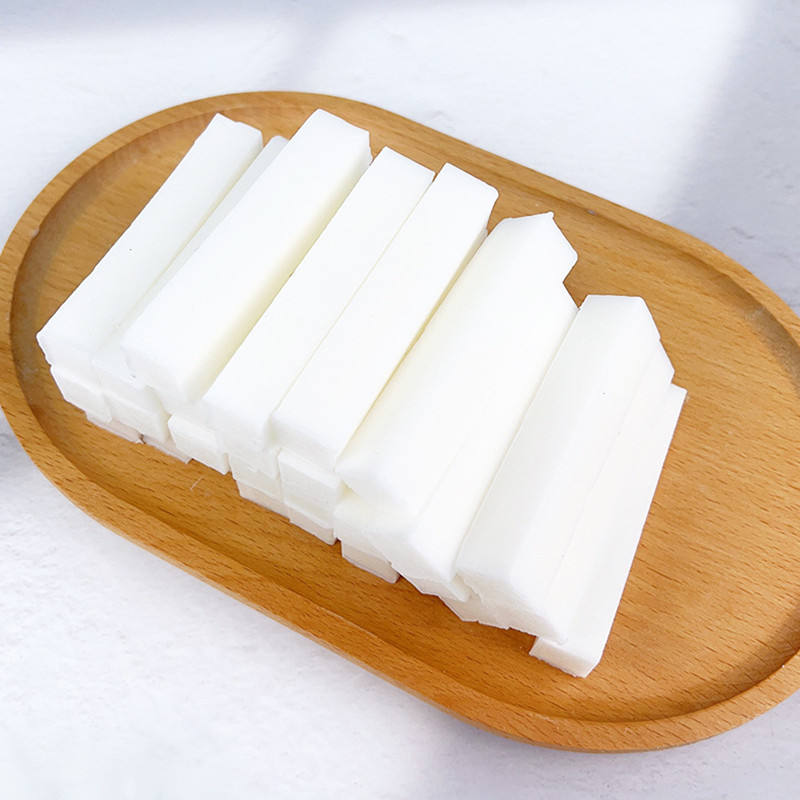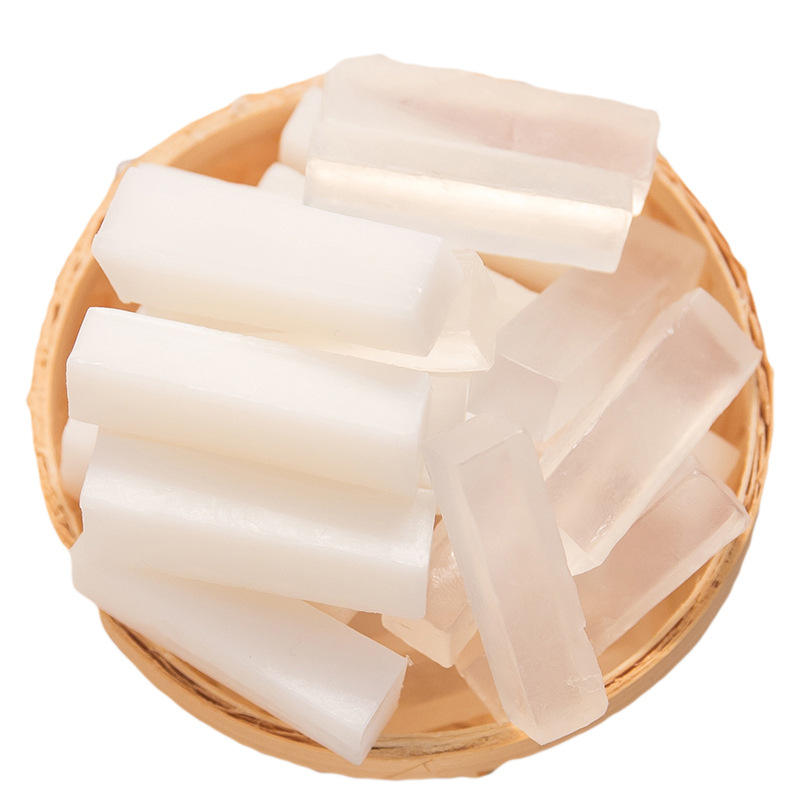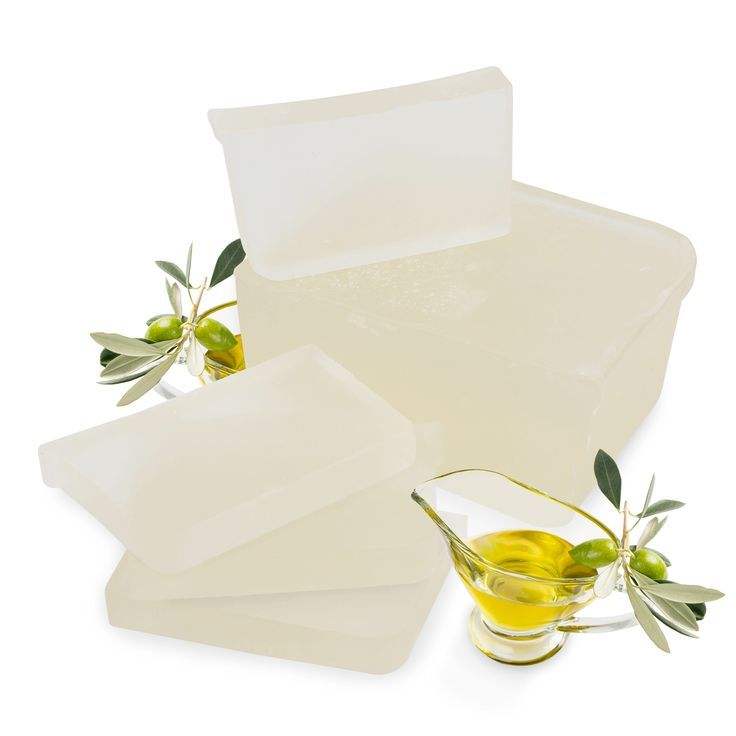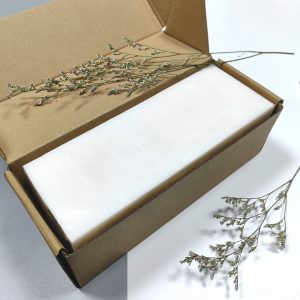Features of soap base include:
- Versatility: Soap base is a versatile ingredient that can be used to create a wide range of soap products, from traditional bar soaps to liquid soaps, shower gels, and more.
- Melt-and-Pour Ability: One of the most significant features of soap base is its melt-and-pour nature. It can be melted, combined with additives like fragrances or colorants, and then poured into molds for shaping. This ease of use makes it a popular choice for homemade soap crafting.
- Glycerin Content: Many soap bases, particularly those considered “glycerin soap bases,” have a high glycerin content. Glycerin is a natural humectant that helps to retain moisture, making soap gentle on the skin.
- Neutral PH: Soap bases often have a neutral or slightly alkaline pH, which is gentle on the skin and suitable for a wide range of users, including those with sensitive skin.
These features make soap base a convenient and user-friendly option for crafting a variety of soap products, whether for personal use or commercial purposes. The specific characteristics and properties can vary among different types of soap bases, so it’s essential to choose the one that best suits your soap-making needs.
Soap base offer several advantages, including:
- Ease of use: Soap base is a convenient and beginner-friendly option for making soap products. It eliminates the need to handle caustic substances like lye, which is a common requirement in traditional soap making. This simplifies the soap-making process, making it accessible to a wider range of crafters.
- Melt-and-Pour Convenience: Perhaps the most significant advantage of soap base is its melt-and-pour nature. It can be melted, mixed with desired additives (such as fragrances, colorants, or exfoliants), and poured into molds. This process is quick and straightforward, allowing for creative and customizable soap designs.
- Consistent Results: Soap base manufacturers carefully control the saponification process, ensuring that the soap is of a consistent quality and pH level. This consistency leads to predictable results in terms of texture, lather, and skin feel.
- Customizability: Soap base provides a blank canvas for soap makers to add a wide range of ingredients to achieve specific properties, scents, and appearances. This customizability allows for the creation of unique and personalized soap products.
In summary, soap base simplifies the soap-making process, offers versatility, and allows for creativity, making it an ideal choice for crafting a wide range of soap products. Whether you’re making soap for personal use or selling your creations, soap base provides a solid foundation for creating high-quality, customizable, and skin-friendly soap.
Customizable aspects of soap base include:
- Fragrance: Soap bases can be infused with a wide variety of fragrances. Soap makers can add essential oils, fragrance oils, or natural scents to achieve specific aromas, from floral and fruity to herbal and exotic.
- Color: Soap base can be tinted to produce soap bars in various colors. Water-soluble dyes, mica powders, and natural colorants like herbs and clays can be used to achieve the desired hues.
- Texture and Exfoliants: To customize the texture of soap, soap makers can incorporate ingredients like oatmeal, poppy seeds, coffee grounds, or pumice to create exfoliating soaps. Alternatively, ingredients like silk fibers or yogurt powder can be added for a creamy texture.
- Moisturizing Ingredients: Additional moisturizing and skin-nourishing ingredients can be blended into the soap base to enhance its properties. Shea butter, cocoa butter, aloe vera, honey, or glycerin are commonly used to make the soap more hydrating and soothing.
- Therapeutic and Medicinal Additives: For specialty soaps, soap makers can include additives like calendula petals, chamomile, or tea tree oil for their therapeutic properties. These can address specific skin concerns, such as acne, eczema, or dryness.
- Shape and Mold: Soap base can be poured into various molds to create distinctive shapes and sizes. Whether you want classic bar soap, decorative shapes, or novelty designs, the choice of molds allows for creativity.
These customizable aspects give soap makers the freedom to design and craft soap products that cater to specific preferences, skin types, or occasions, making soap base a versatile and creative medium for soap crafting.
There are several packaging solutions available for soap base, including:
- Bulk Packaging: Soap base can be purchased in bulk quantities, typically in larger containers or boxes. This is a cost-effective option for those producing soap on a larger scale, such as commercial soap manufacturers.
- Plastic Containers: Soap base can be packaged in plastic containers, often in the form of tubs or buckets. These containers are durable and make it easy to scoop out the desired amount of soap base. They are typically sealed with airtight lids to maintain freshness.
- Pouches or Bags: Some soap base is available in resealable pouches or bags. These are suitable for smaller quantities and are convenient for home-based soap makers. The resealable feature helps to keep the soap base airtight and fresh.
- Cellophane Wrapping: Individual soap base bars or pieces can be wrapped in cellophane or shrink wrap. This method provides protection from moisture and contaminants, and it allows customers to see the soap’s appearance and texture.
- Cardboard Boxes: Soap base bars can be packaged in cardboard boxes. These boxes can be customized with branding, designs, or labels. They offer a visually appealing presentation, making the soap a suitable gift or retail item.
- Paper Bags: Simple paper bags are an eco-friendly and budget-friendly packaging solution. They can be used for small quantities of soap base or for packaging soap pieces or samples.
The choice of packaging solution depends on factors like the type of soap base, the intended use or audience, branding and presentation goals, and environmental considerations. It’s essential to select packaging that not only protects the soap base but also enhances its visual appeal and marketability.

